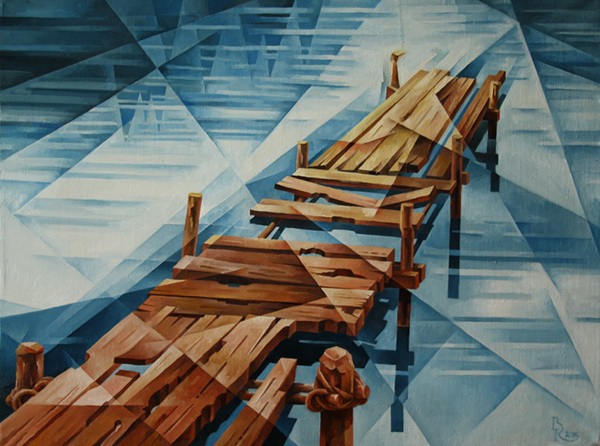


Rozanova exhibited at the so-called Last Futurist Exhibition held in St. Don’t worry if you live abroad! I will mail everything to you. Post an artwork created by a female artist, tag HerArt on Instagram or Facebook, and we’ll reward you with wall art and feminist stickers. Please don’t forget that every day of the month you can participate in our giveaway. “Lady in pink (Artist’s sister Anna Rozanova)” by Olga Rozanova, 1911, Portrait, Cubism But if works like Malevich’s wear the influence of Cubism on their sleeve, Rozanova’s Cubo-Futurist aesthetic was unusual in its relative lack of reliance on French models, and for its unique affinity with contemporary Italian painting. Cubo-Futurism is often referred to as one of the staging posts on Kazimir Malevich’s journey towards the Suprematist style achieved with his Black Square of 1915 (itself based on a 1913 curtain design for the Cubo-Futurist opera Victory Over the Sun). The aesthetic of Rozanova’s middle period is a striking example of what is now known as Cubo-Futurism, a term for various painting styles developed in Russia during the early 1910s which combined the ideas and techniques of French Cubism with a range of native influences and, and later the influence of Italian Futurism. The critic Nina Gurianova notes that Rozanova’s early works are primarily distinguished by the artist’s “unusual approach to the model,” whereby Rozanova brings “into each drawing an individual, personal element of portraiture”, indicating “on every page not only the exact date, but also the name of the model, often in a friendly, diminutive nickname…”. Petersburg and Moscow, working under the tutelage of the Realist painter Nikolai Ulyanov, and with the Impressionist landscape painter Konstantin Yuon. Little is known for certain about Rozanova’s early artistic education, but she definitely trained in private art schools in St.

Rozanova studied at the Vladimir Women’s Gymnasium for eight years, before leaving her home-town to train as a painter in Moscow, where her brother was already based as a law student. At 17 years old Rozanova loses her father, leaving Olga’s mother as the head of the household. Her father, Vladimir Iakovlevich Rozanov, was a district police officer, while her mother, Elizaveta Vasilevna Rozanova, was the daughter of an Orthodox priest, educated to a high level for a woman of her generation. Olga Rozanova was born in a small town about 200 kilometers east of Moscow.


 0 kommentar(er)
0 kommentar(er)
